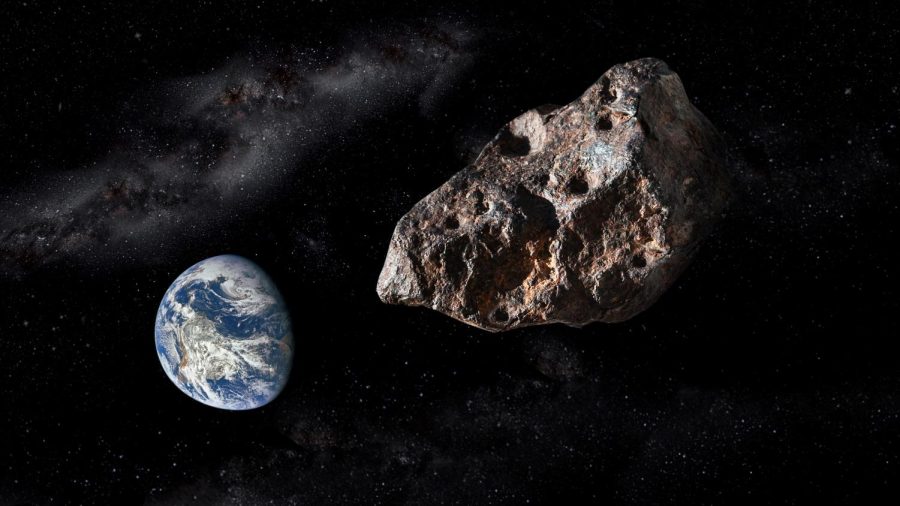Did You Catch that Asteroid?
May 5, 2022
Yesterday afternoon, a large asteroid passed through our blue skies. HB1 only came within 125,000 miles of Earth, or roughly half the distance between Earth and the moon. Although the asteroid wasn’t visible to the human eye when it passed through our cosmic neighborhood, you can watch it pass by on YouTube thanks to The Virtual Telescope Effort, a robotic telescope-monitoring project from Italy’s Bellatrix Astronomical Observatory.
NASA and other space agencies spend time and resources locating and categorizing space pebbles that may pose a threat to the health of our planet. For NASA, the Center for Near Earth Object Studies (CNEOS) examines the orbits of all known near-Earth objects, and the European Space Agency keeps tabs on them as well. There are 28,805 Near-Earth Asteroids according to the most recent count. All of them are asteroids and comets that approach the sun within 120 million miles, bringing their orbits close to Earth’s.
Only a small percentage of comets and asteroids are classified as potentially dangerous by CNEOS; these include comets and asteroids that are at least 460 feet large and are within 4.6 million miles of Earth’s orbit around the sun. Vesta, the largest asteroid ever discovered in our solar system, has a diameter of 329 miles. Vesta, first discovered in 1807 by astronomer Heinrich Wilhelm Olbers, is big enough to have its own craters from asteroid strikes, according to the Hubble Space Telescope.
However, the majority of asteroids are tiny. These hits are becoming more common and dangerous, as seen by the 65-foot space meteor that burst 20 miles above Cheyabinsk, Russia on February 15, 2013, destroying property and wounding over 1,000 people as it broke out windows. It seems brighter than the sun in photographs. It was the largest meteor to hit Earth’s atmosphere since the Tunguska incident in 1908, which destroyed 500,000 acres of pine forest and threw people to the ground in Russia.
Using a global network of infrasound (extremely low frequency sound) sensors, the Nuclear Test Ban Treaty Organization has documented more than 25 atom-bomb-scale asteroid impacts on Earth’s atmosphere since 2000. These were made to detect nuclear explosions, but they also pick up infrasound signals from massive oncoming meteors that erupt in the atmosphere.
While a bus-sized asteroid is stunning, a much larger asteroid will pass by Earth later this week. The largest of the next four close-approach asteroids will be a 1,500-foot behemoth the size of a bridge. On April 28, it will pass within 2,010,000 miles of Earth.
